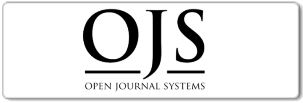KANDUNGAN KLOROFIL, PROLIN DAN KAROTEN SERTA PRODUKSI KEDELAI [GLYCINE MAX (L.) MERR.] YANG DITANAM PADA KONDISI CEKAMAN SALINITAS BERBEDA
Abstract
In areas with high salinity, not all plants can thrive optimally due to the inhibitory effects of elevated salinity on plant growth and production. Investigating the levels of chlorophyll, proline, and carotenoids, as well as the yield of soybean cultivar Grobogan under different salinity stress conditions, can provide insights into the growth and productivity capabilities of the plant. This endeavor represents an initiative to identify soybean varieties resilient to high salinity. The objectives of this study are as follows: 1. To determine chlorophyll content; 2. To ascertain proline content; 3. To assess carotenoid content; 4. To evaluate the yield of soybean cultivar Grobogan under varying salinity stress conditions. The research findings, which indicate elevated levels of chlorophyll, proline, and carotenoids, as well as increased yield following exposure to different salinity treatments, suggest that the Grobogan cultivar exhibits productivity at a salinity level of 120 mM NaCl. Carotenoid content, pod count, filled pod count, and weight per 100 seeds did not show significant changes compared to the control group. However, under salinity stress of 120 mM NaCl, the chlorophyll content was highest at 12,412 μg/ml, and the proline content reached 17,694 μmol proline/g. The percentage of empty pods at 120 mM NaCl salinity was lowest at 0.6%. The subsequent step involves direct cultivation of Grobogan soybeans in areas with high salinity or in agricultural lands with suboptimal irrigation practices.
References
Ayman EL Sabagh , Akbar Hossain , Mohammad Shohidul Islam , Celaleddin Barutçular , Disna Ratnasekera , Narendra Kumar , Ram Swaroop Meena , Hany Sobhy Gharib , Hirofumi Saneoka8 , Jaime A. Teixeira da Silva. 2019. Sustainable soybean production and abiotic stress management in saline environments: a critical review. Australian of Crop Science.
Aziez, A. F., Supriyadi, T., Dewi, T. S. K. & Saputra, A. F., 2021. Analisis Pertumbuhan Kedelai Varietas Grobogan pada Cekaman Kekeringan. Jurnal Ilmiah Agrineca, 21(1), pp. 25-33.
Balitkabi, 2016. Deskripsi Varietas Unggul Kedelai 1918-2016. Balai Penelitian Tanaman Aneka Kacang dan Umbi. Malang.
Bates L.S., Waldren R.P., and Teare I.D. 1973. Rapid determination of free proline for waterstress studies. Plant and Soil. (39):205-207.
Chanifah, Triastono, J. & Sahara, D., 2020. Daya Saing dan Proteksi Kebijakan Pemerintah terhadap Kedelai Domestik di Kabupaten Grobogan, Jawa Tengah. Jurnal Pangan, 29(3), pp. 211-220.
Dirjen Tanaman Pangan. 2019. Petunjuk Pelaksanaan Kegiatan Pengelolaan Produksi Kedelai Dan Aneka Kacang Dan Umbi Lainnya Tahun Anggaran 2019.
Ferdous, J., Mannan, M. A., Haque, M. M., Alam, M. S., and Talukder, S. 2018. Mitigation of Salinity Stress In Soybean Using Organic Amendments. Bangladesh Agron. J. 2018, 21(1): 39-50.
Hairmansis, A. & Nafisah., 2020. Pengembangan Varietas Unggul Padi untuk Lahan Terdampak Salinitas. Jurnal Pangan, 29(2), pp. 161-170.
Hakim, M. S., Dewanti, P., Hartatik, S., Slameto & Handoyo, T., 2020. Application Effect of Potassium on Rice (Oryza sativa L.) Recovery After Drought Stress. Jurnal Ilmu Dasar, 21(2), pp. 115-122.
Hendriyani, I.S., Nurchayati, Y. & Setiari, N., 2018. Kandungan Klorofil dan Karotenoid Kacang Tunggak (Vigna unguiculata (L.) Walp.) pada Umur Tanam yang Berbeda. Jurnal Biologi Tropika, 1(2), pp.38-43.
Hirschberg J, Cohen M, Harker M, Lotan T, Mann V, Pecker I (1997). "Molecular genetics of the carotenoid biosynthesis pathway in plants and algae". Pure & Appl Chem. 69 (10): 2151.
Juwarno, J. (2019). Respon Lima Kultivar Kedelai (Glycine max (L.) Merr.) Terhadap Cekaman Salinitas Ditinjau Dari Aspek Morfologis, Anatomis dan Fisiologis Didukung Oleh Karakteristik Molekuler. Disertasi Fakultas Biologi Unsoed (Tidak dipublikasikan).
Karolinoerita, V. & Yusuf, W. A., 2020. Salinisasi Lahan dan Permasalahannya di Indonesia. Jurnal Sumberdaya Lahan, 14(2), pp. 91-99.
Khalil, M. S. 2015. Impact of sea salt stress on growth and some physiological attributes of some soybean ( Glycine max L.) varieties. Iranian journal of Plant Physiology. Vol.6 (1) : 1559-1571.
Kondetti, P., Jawali, K.N., Apte, S.K., and Shitole, M.G. 2012. Salt tolerance in Indian soy bean (Glycine max (L.) Merrill. Annals of Biological Library. Coden (USA). 3 : 1489 – 1498.
Kristiono, A., Purwaningrahayu, R.D. dan Taufiq, A. 2013. Respons Tanaman Kedelai, Kacang Tanah, Dan Kacang Hijau Terhadap Cekaman Salinitas.Buletin Palawija No. 26-2013: 45–60.
Kurniawati, S., Khumaida, N., Ardie, S. W., Hartati, N. S. & Sudarmonowati, E., 2014. Pola Akumulasi Prolin dan Poliamin Beberapa Aksesi Tanaman Terung pada Cekaman Kekeringan. Jurnal Agronomi Indonesia (Indonesian Journal of Agronomy), 42(2), pp. 136-141.
Limede, A.C., Oliveira, C.E.S., Zoz, A., Zuffo, A.M., Steiner, F., Zoz, T., 2018. Effects of seed size and sowing depth in the emergence and morphophysiological development of soybean cultivated in sandy texture soil. Australian Journal Crops Science (AJCS) 12(01):93-98.
Lubis, N. A., Rosmayati, R. & Hanafiah, D. S., 2015. Persilangan Genotipe-Genotipe Kedelai (Glycine max L. Merrill.) Hasil Seleksi pada Tanah Salin dengan Tetua Betina Varietas Grobogan. Jurnal Agroekoteknologi Universitas Sumatera Utara, 3(1), 291-298.
Meriem, S., Sari, A. P. & Pasaribu, P., 2020. Prolin, Asam Askorbat, dan Kandungan Air Relatif pada Tanaman C3 dan C4 yang Tercekam Kekeringan. Bioma, 2(2), pp. 26-32.
Muarif, A. R., Hasanuddin & Zuyasna, 2020. Respon Beberapa Galur Mutan Kedelai (Glycine max (L.) Merril) Generasi M5 pada Berbagai Tingkat Cekaman Salinitas terhadap Viabilitas dan Vigor Benih serta Pertumbuhan Vegetatif Tanaman pada Media Rockwool. Cassowary, 3(2), pp. 77-90.
Nafees, A.K., M.I.R. Iqbal, M. Asgher, M. Fatma, A. Masood and S. Sayeed. 2014. Salinity tolerant in plants : revisiting of the role of sulfur metabolits. Plant Biochemistry and Physiology Journal. Vol. 2 (1) : 2-8.
Ningrum, S.M., Tohari & Respatie, D.W. 2020. Pengaruh Tingkat Naungan dan Takaran Pupuk Kandang Kambing Etawa terhadap Pertumbuhan dan Hasil Kedelai (Glycine max (L.) Merrill) di Lahan Pasir Pantai. Vegetalika, 9(2), pp.373-87.
Purwaningrahayu, R. D., 2016. Karakter Morfofisiologi dan Agronomi Kedelai Toleran Salinitas. Iptek Tanaman Pangan, 11(1), pp. 35-48.
Purwaningrahayu, R. D. & Taufiq, A., 2017. Respon Morfologi Empat Genotip Kedelai terhadap Cekaman Salinitas. Jurnal Biologi Indonesia, 13(2), pp. 175-188.
Porra, R.J. 2002. The chequered history of the development and use of simultaneous equation for the accurate for determination of chlorophyll a and b. Photosynthesis Research 73 : 149 -156.
Rastegar, Z. and Kandi, M.A.S., 2011. The effect of salinity and seed size on seed reserve utilization and seedling growth of soybean (Glycin max). Int. J. Agron. Plant Prod, 2(1), pp.1–4.
Rosawanti, P., 2016. Pengaruh Cekaman Kekeringan terhadap Kandungan Klorofil dan Prolin Daun Kedelai. Anterior Jurnal, 15(2), 172-179.
Rozbeh, F., M. Adel, and A. Ali. 2015. Effect of salt stress on seedling growth and ion homeostasis of soy bean (Glycine max ) cultivars. Journal of Scientific Research and Development. Vol 2 (5) : 118-121.
Saad, K.M., 2015. Impact of sea salt stress on growth and some physiological attributes of some soybean (Glycine max L.) varieties. Iranian Journal of Plant Physiology, 6(1), pp.1559-1571.
Simanjuntak, A. P., Hanafiah, D. S. & Siregar, L. A. M., 2021. Effect of Salinity on Phenothypic Soybean Mutant Character (Glycine max (L.) Merr). In IOP Conference Series: Earth and Environmental Science 762 (1), pp. 1-8.
Simbolon, R., Kardhinata, E.H. and Husni, Y., 2013. Evaluasi Toleransi tanaman Kedelai (Glycine max (L.) Merril) Generasi M3 Hasil Radiasi Sinar Gamma terhadap Salinitas. Agroekoteknologi, 1(3), pp.590–603.
Sofalian, O., Miandoab, P.B., Asghari, A., Sedghi, M. and Eshghi, A., 2013. Relationship between salt tolerance related physiological traits and protein markers in soybean cultivars (Glycine max l.). Cercetari agronomice in Moldova, 46(4), pp.47-56.
Suhartini, T. & Harjosudarmo, T. Z. P., 2017. Toleransi Plasma Nutfah Padi Lokal terhadap Salinitas. Plasma Nutfah, 23(1), pp. 51-58.
Wahono, E., Izzati, M. & Parman, S., 2018. Interaksi antara Tingkat Ketersediaan Air dan Varietas terhadap Kandungan Prolin serta Pertumbuhan Tanaman Kedelai (Glycine max L. Merr). Buletin Anatomi dan Fisiologi (Bulletin of Anatomy and Physiology), 3(1), 11-19.
Widiati, B.R.G., Farid M.BDR, Amin N., Muchtar S.S., dan Izddin I. 2014.. Ketahanan Genotipe Kedelai Terhadap Kekeringan dan Kemasaman, Hasil Induksi Mutasi Dengan Sinar Gamma. Jurnal Agroteknos. Vol. 4 No. 1 : 44-52.

This work is licensed under a Creative Commons Attribution 4.0 International License.







